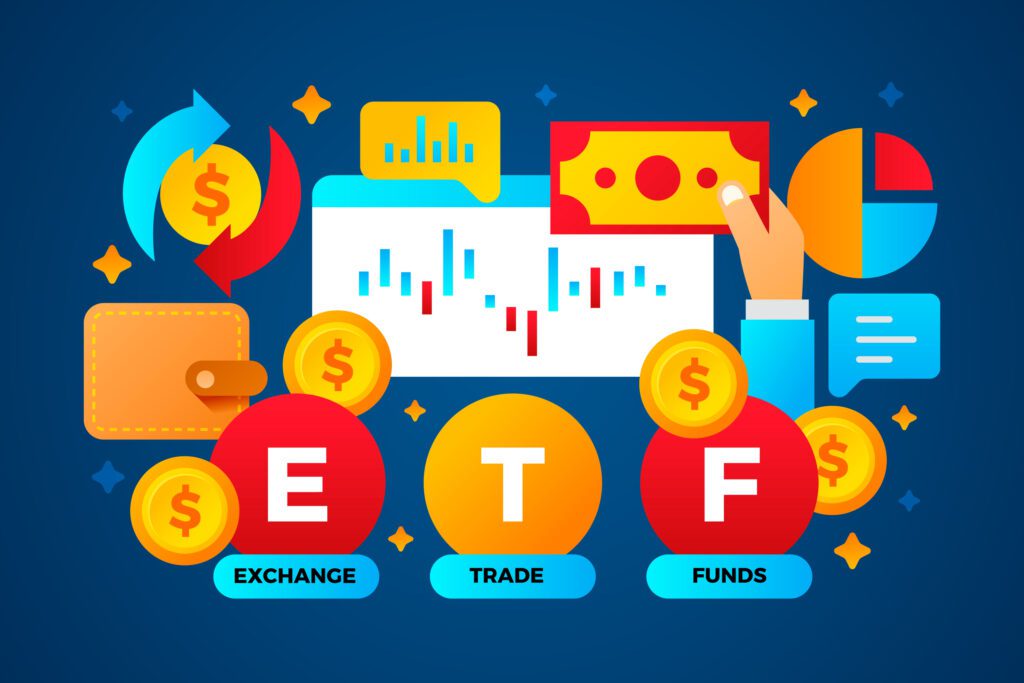In today’s fast-paced financial world, many individuals are seeking ways to generate passive income to achieve financial independence or supplement their current income. One of the most effective and accessible methods for achieving this goal is through investing in Dividend Exchange-Traded Funds (ETFs). These investment vehicles combine the benefits of dividend-paying stocks with the diversification and simplicity of ETFs, making them an attractive option for both novice and experienced investors.
Understanding Dividend ETFs
Before diving into how to generate passive income with Dividend ETFs, it’s important to understand what they are. ETFs are investment funds that trade on stock exchanges, similar to individual stocks. They typically track an index, sector, commodity, or other assets, and are designed to provide investors with exposure to a diversified portfolio.
Dividend ETFs specifically focus on holding stocks that regularly pay dividends. These dividends are typically distributed to ETF shareholders on a regular basis (monthly, quarterly, or annually), providing a stream of income. The main appeal of Dividend ETFs lies in their ability to generate consistent income while offering the diversification benefits of an ETF.
The Appeal of Dividend ETFs for Passive Income
- Regular Income Streams: The primary appeal of Dividend ETFs is the potential to receive regular income through dividend payments. Since these ETFs hold dividend-paying stocks, they distribute a portion of the income generated by those stocks to investors. This can provide a reliable stream of passive income.
- Diversification: One of the biggest advantages of ETFs, in general, is diversification. By investing in a Dividend ETF, you are not relying on the performance of a single stock. Instead, you gain exposure to a basket of dividend-paying stocks, which reduces the risk associated with individual stock volatility.
- Lower Costs: Dividend ETFs tend to have lower expense ratios compared to actively managed mutual funds. This means you keep more of your returns, which is especially important for long-term income generation.
- Tax Efficiency: ETFs are generally more tax-efficient than mutual funds due to their unique structure. When an ETF needs to sell securities to rebalance or adjust its holdings, it can do so without generating a taxable event for shareholders. This can lead to lower capital gains taxes for investors.
- Potential for Capital Appreciation: While the primary focus of Dividend ETFs is income generation, many of these ETFs also offer the potential for capital appreciation. As the underlying stocks in the ETF grow in value, so does the ETF itself, providing a dual benefit of income and growth.
How to Select the Right Dividend ETFs
Not all Dividend ETFs are created equal, and selecting the right ones for your portfolio is crucial for maximizing passive income. Here are some factors to consider when choosing a Dividend ETF:
- Dividend Yield: The dividend yield is a key factor to consider. It represents the annual dividend income as a percentage of the ETF’s current price. While a higher yield can be attractive, it’s important to ensure that the yield is sustainable. Extremely high yields may be a sign of underlying issues with the stocks in the ETF, such as declining stock prices or unstable dividends.
- Expense Ratio: The expense ratio is the annual fee charged by the ETF provider for managing the fund. Lower expense ratios mean more of your returns stay in your pocket. Compare the expense ratios of similar ETFs to ensure you’re not overpaying for management.
- Dividend Growth: Look for ETFs that not only offer a good current yield but also have a history of dividend growth. This indicates that the companies within the ETF are financially healthy and committed to returning value to shareholders over time.
- Diversification: Assess the diversification within the ETF. A well-diversified Dividend ETF will spread its investments across various sectors and industries, reducing the risk associated with any single sector’s downturn.
- Fund Size and Liquidity: Larger ETFs tend to be more stable and have higher liquidity, meaning you can buy and sell shares more easily without impacting the price. Additionally, larger funds are less likely to be closed by the provider.
- Payout Frequency: Consider the frequency of dividend payments. Some ETFs pay dividends monthly, while others may pay quarterly or annually. Depending on your income needs, you may prefer one frequency over another.
Strategies for Generating Passive Income with Dividend ETFs
Once you’ve selected the right Dividend ETFs, it’s time to implement strategies that maximize your passive income potential. Here are some effective strategies:
- Reinvest Dividends: One of the most powerful ways to grow your passive income over time is to reinvest your dividends. Many brokers offer a Dividend Reinvestment Plan (DRIP) that automatically reinvests your dividends into additional shares of the ETF. This allows your income to compound, potentially leading to greater income generation in the long run.
- Dollar-Cost Averaging: Instead of trying to time the market, consider using a dollar-cost averaging strategy. This involves investing a fixed amount of money into your chosen Dividend ETFs at regular intervals (e.g., monthly). This strategy reduces the impact of market volatility and helps you build your position in the ETF over time.
- Focus on High-Quality ETFs: Prioritize ETFs that hold high-quality, financially stable companies with a track record of paying and increasing dividends. These companies are more likely to continue providing reliable income even during economic downturns.
- Diversify Your ETF Holdings: While Dividend ETFs are already diversified by nature, consider holding multiple Dividend ETFs that focus on different sectors or geographic regions. This further spreads your risk and can provide income from a variety of sources.
- Monitor and Adjust: Regularly review your Dividend ETF portfolio to ensure it continues to meet your income goals. While Dividend ETFs are generally long-term investments, it’s important to stay informed about any changes in the underlying companies or the ETF itself that might impact your income.
Risks to Consider
While Dividend ETFs are a great tool for generating passive income, they are not without risks. Here are some potential risks to be aware of:
- Dividend Cuts: The companies within a Dividend ETF may reduce or eliminate their dividend payments, which can decrease the income you receive from the ETF.
- Market Risk: Like all investments, Dividend ETFs are subject to market fluctuations. The value of the ETF can rise or fall depending on broader market conditions.
- Interest Rate Risk: Rising interest rates can make dividend-paying stocks less attractive compared to bonds, which may lead to a decline in the ETF’s value.
- Sector Concentration: Some Dividend ETFs may be heavily concentrated in certain sectors (e.g., utilities or financials). If that sector underperforms, it can negatively impact the ETF’s performance.
Conclusion
Generating passive income with Dividend ETFs is an effective strategy for achieving financial independence and supplementing your income. By understanding the fundamentals of Dividend ETFs, selecting the right funds, and implementing smart investment strategies, you can build a steady stream of income that grows over time. However, it’s important to remain mindful of the risks and regularly review your portfolio to ensure it aligns with your financial goals. With patience and discipline, Dividend ETFs can be a powerful tool in your investment arsenal, helping you achieve long-term financial success.


